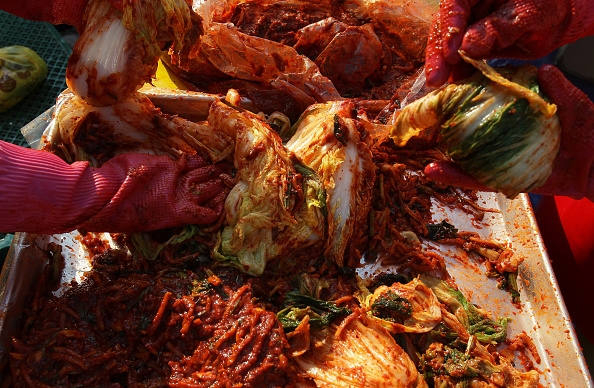Nature Family History/Tradition/Inheritance Work/Labour |
I have read several blogs—which were amazing by the way! To read everyone’s stories about home was not only touching, but incredibly insightful. As a sentimental loser, I enjoyed the emotion and passion behind your narratives and somehow, reading them inflicted me with the case of the homesick even though I’m ‘home’ anyway. Certainly, this is a grand testament to how powerful language can be, and considering how much we have discussed in regards to the power of stories, I think we can attest to such a force. We may not be professional writers (or at least, most of us I would assume), but through the simple act of communication, we can still impact each other in thoughtful, eye-opening ways.
Anyways with that aside, in order to focus this entry, I’ve drawn the commonalities from three wonderful posts: Cherie’s, Andrea’s, and Karen’s.
Cherie and Karen’s stories are steeped wonderfully in the broth of Asian culture. More specifically, they’ve written their tales in accordance with the Chinese New Year and while I am not of Chinese heritage, I can relate intimately with many of the themes they’ve brewed within their entries. There’s a reason I’ve made many puns (and I apologize for the many eye-rolls that I’ve provoked with such a linguistic maneuver) about food. Their stories alongside mine connect food with familiarity, family and community. With food comes assembly, marking special occasion with collective memory. As a Korean boy (or do I call myself a man? Sometimes I wonder if I’m also suffering from a case of Peter-Pan perpetuity), I’ve always been reminded of the importance of my culture’s food. In particular, kimchi is a precious food for my culture, and rather than taking the spotlight as a main dish, this spicy pickled cabbage represents Korean cuisine through the seemingly humble role of the side-dish.

However, the side-dish, or banchan in Korean, holds significant power on the dinner table, facilitating the sharing of food and it is these personal transactions across the table that remind me of home. The creation of many Asian foods is communal as well, remarked by Karen in her commentary that follows her work. Not only do we eat together, but in order to reach that family meal, we cook together as well. Indeed, side-dishes in many Asian cultures possess these qualities of kinship which I have made sure to highlight in my story through the inverse of dysfunction, but also through the strict observance of tradition. The home anchors tradition for us, becoming a place that follows carefully, a culture of rules and observances that stabilize the identity or the idea of the ‘home.’ Lijun’s household is strict, and his inability to seize the last piece of fish, although originally intended for sharing among his kin, is snatched away by patriarchal tradition. Likewise, in Karen and Cherie’s stories, food and other observed behaviours occur through tradition. Every Chinese New Years, this and this happens. Such and such happens. Repetition creates the story, canonizes events in their lives and is promised to replicate itself again the same time next year.
Closely aligned with tradition is history and this particular idea is prominent in Andrea’s story. While my story hints toward history and inheritance subtly, Andrea’s narrative bursts at the seams with wonderful descriptions of her home’s roots. Her fine tracing which leads back to Port Alberni and even further, toward the times of the Tseshaht and Hupacasath territories reminds me that the past truly does inform the present and is the idea of the home exempt from such a connection? Certainly not. What’s wonderful about her story is that she links history and memory with nature, and that element of the home is something I’ve featured heavily in my own narrative. Andrea writes of an intimate connection of the landscape around her and of her conception of home, and such a theme resonates within the Abbotsfordian blood of my veins. Surrounded by nature and the idyllic views of the countryside, I cannot separate my idea of home from the physical beauty of the world around me. The natural world, like for Andrea, provides me with my bearings and allows me to realize how much of my home extends the borders of my room walls and outside into the wonderful expanse of nature. Where we live is a significant element of ‘home.’
The telling of these stories which are all so personal to us reminds me of a line from Thomas King’s book where he justifies his habit of retelling three particular stories. He calls them “saving stories… stories that help keep me alive” (119). Our stories of home not only keep our unique ideas of ‘home’ alive to us, but also breathe personal colour to our identities. We’ve told our stories once here. When will be the next time we speak of home?
Works Cited:
Beck, Julie. “The Psychology of Home: Why Where You Live Means So Much.” The Atlantic. N.p., 30 Dec. 2011. Web. 11 Feb. 2016. <http://www.theatlantic.com/health/archive/2011/12/the-psychology-of-home-why-where-you-live-means-so-much/249800/>.
Chung, Sung-Jun. Kimjang or the making of kimchi. Digital image. Getty Images News, n.d. Web. 12 Feb. 2016. <http://data.en.koreaportal.com/data/images/full/60/kimchi-making-jpg.jpg?w=600>.
Han, Jeon, and Yoon Sojung. “UNESCO Recognizes Kimjang, Korean Culture of Sharing.” Korea.net. N.p., 11 Dec. 2013. Web. 11 Feb. 2016. <http://www.korea.net/NewsFocus/Culture/view?articleId=116173>.
King, Thomas. The Truth About Stories: A Native Narrative. Toronto: Anansi Press. 2003. Print.